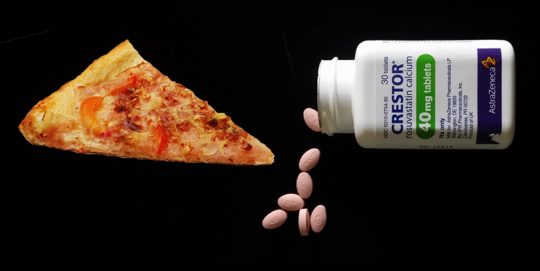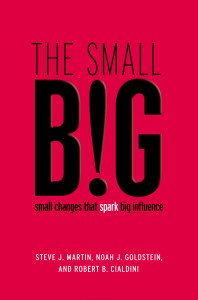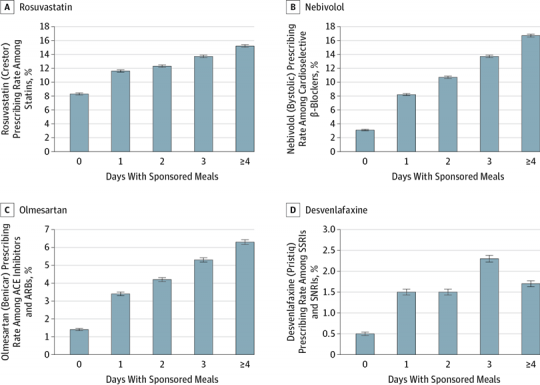Reciprocity Power: A Study That May Shock You

Doctors in the U.S. are generally well-compensated. One survey showed that family practitioners earn $227,000 per year, while some specialties can hit $400,000 – $600,000.
One would hardly expect a cheap free lunch to influence which drugs they prescribe for their patients.
The conclusion of a new study may surprise even students of behavior science.
A team of researchers examined the prescribing behavior of 279,669 physicians found that even very inexpensive meals (less than $20) were correlated with more brand-name prescriptions. (Branded drugs are usually much more expensive than their generic counterparts.)
Even a single cheap meal could, apparently, change behavior.
The study concluded that receiving sponsored meals was associated with an “increased rate of prescribing the promoted brand-name medication to Medicare patients.”
Even a few cheap meals changed prescription-writing by doctors. http://pic.twitter.com/NXruaWQvLp Share on XThis is certainly a non-conscious effect. No doctor would admit to being influenced by a slice or two of pizza, nor would such a link even be rational.
While ethical guidelines suggest doctors not accept any gifts “for which reciprocity is expected or implied,” both parties to the cheap meal transaction almost certainly believe that no such reciprocity is present.
Reciprocity Isn’t Always Explicit
Just about every marketer knows about reciprocity (or as it’s also called, reciprocation).
Research by Robert Cialdini and others has shown that if you do something for someone first, they are more likely to reciprocate. And, the “favors” don’t have to be equivalent – a small favor can beget a bigger return favor.
And, this kind of reciprocity isn’t overt – either party or both may be unaware that their behaviors are linked.
The doctor study is an example of this – despite the lack of conscious awareness of reciprocity being triggered, the effect is significant.
The Small Big?
 This rather remarkable finding evokes the name of Cialdini’s recent book, The Small Big (co-authored with Steve Martin and Noah Goldstein). The central thesis of that book is that even tiny interventions can have an outsized influence on behavior.
This rather remarkable finding evokes the name of Cialdini’s recent book, The Small Big (co-authored with Steve Martin and Noah Goldstein). The central thesis of that book is that even tiny interventions can have an outsized influence on behavior.
I spoke to Cialdini about that book when it was released. He pointed out that it “applies a return on investment model to persuasion science,” and highlights “tactics and procedures and practices that make a big difference, but which require very little effort or time or resources on our part to produce that effect.”
Reciprocity: a small favor can trigger a much bigger return favor. http://pic.twitter.com/NXruaWQvLp Share on XTreating a doctor to a cheap meal that could drive tens of thousands of dollars in additional prescription revenue seems like a high-ROI example of a small intervention! And, the minimal value of the meal mutes potential ethical questions.
 Cialdini himself invokes reciprocation at his speaking engagements, as I describe in How the World’s Leading Persuasion Expert Gets Your Business Card.
Cialdini himself invokes reciprocation at his speaking engagements, as I describe in How the World’s Leading Persuasion Expert Gets Your Business Card.
Why Reciprocity?
Why use reciprocity as a marketer when you could simply establish a quid-pro-quo transaction? The latter would seem to result in a more certain outcome.
The reason is simple. In a defined transaction, perceived fairness and rough equivalence of outcomes is important. All commerce where goods are exchanged for money is based on both parties seeing the transaction as fair.
But, trading a slice of pizza and a Diet Coke for months of favorable prescription writing would be laughable as a transaction. (Not to mention unethical.)
The power of psychological reciprocity is that the benefits to each side can be profoundly unequal.
How You Can Use Reciprocity
The underlying concept in using reciprocity to influence others is that it is never a quid-pro-quo exchange. It doesn’t work if one favor is contingent on the other.
For example, the common technique of rewarding those who subscribe to a newsletter with, say, a free ebook, can be effective. It can win A/B tests compared to no bonus material. But, it’s not reciprocity. It’s a transaction.
That type of transaction could invoke reciprocity if the publisher let a visitor download a free ebook first, and then suggested they subscribe. (I described this approach in Collecting Visitor Info: Reward vs. Reciprocity.)
Arguably, though, most blogs and news sites establish reciprocity by providing freely accessible content for their visitors. The free e-book they may offer is merely an additional incentive in that scenario, not the primary driver of behavior.
Let’s bring this closer to home…
At the end of this post there’s an offer to subscribe to my newsletter. One could argue that the reader who gets that far has reciprocity activated and is more likely to subscribe than, say, had the appeal been at the beginning of the article.
One could likely increase the reciprocity effect for a content site by pointing out the value given to the visitor. For example, I could add messaging to this blog like, “You are free to browse our entire archive of more than 1,100 articles!”
Another way to boost subscriptions might be a double-reward approach. This method would let visitors download something without subscribing. When they get their free item (and reciprocity is invoked), they would see a call to action to subscribe with another related free item.
The second free item wouldn’t be reciprocation, but it would make the offer to subscribe more attractive.
Product Launches and Reciprocity
 Many of the product launches I see today are modeled on Product Launch Formula developed by Jeff Walker.
Many of the product launches I see today are modeled on Product Launch Formula developed by Jeff Walker.
While individual approaches may vary, a key characteristic of these launches is to use a series of free videos. The first video is always valuable content that will help the viewer in some way. There’s no sales pitch in the first video. Additional free content like a checklist or workbook may be offered, too.
Subsequent videos add more value, but transition from pure content to a pitch for the paid product.
That first video establishes the reciprocity effect – not only is the seller demonstrating knowledge of the space, he or she is giving the viewer something of value with nothing requested in return. As Walker writes in Launch,
Reciprocity is a very powerful trigger…
That’s what the whole prelaunch is about . . . giving out great, free content… In the end, when you ask for something back, your prospect will have a greater tendency to want to reciprocate. And at the end of the launch, that reciprocation often equates to a sale.
The fact that variations on this approach are used by many, if not most, successful internet marketers testifies to its effectiveness.
Reciprocity is a key factor in Walker Formula launches. http://pic.twitter.com/NXruaWQvLp Share on XGive Before You Get
There’s a massive amount of both scientific and commercial data that show reciprocity increases your influence and persuasiveness.
So, even if it seems wrong to you, give your potential customers something with no conditions or catches before you try to close the sale. You may be surprised at the results!
Are you already using reciprocity, or have you tested it? Share your story in a comment!
Reciprocity: Give first with no return favor expected or implied. http://pic.twitter.com/NXruaWQvLp Share on XAnd, if you’ve enjoyed this article and aren’t yet a subscriber… now’s the time to act! 😉

